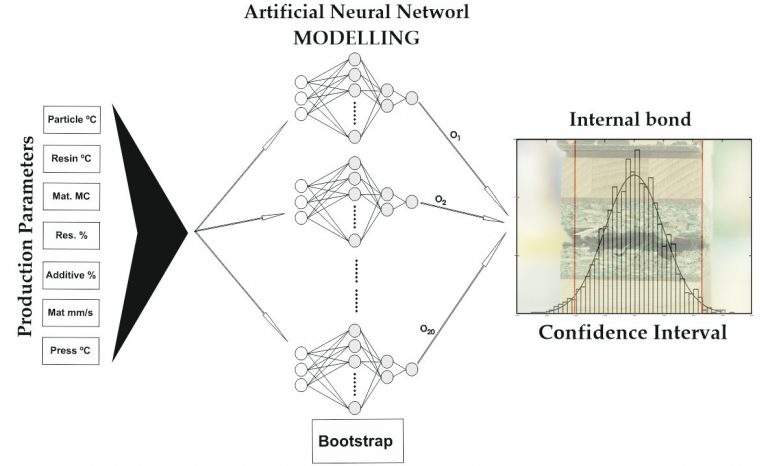Autores: Francisco García Fernández, Paloma de Palacios, Alberto García-Iruela and Luis García Esteban
Publicación: Appl. Sci. 15, 4554 (2025)
Enlace DOI: https://doi.org/10.3390/app15084554
Resumen: Tensile strength perpendicular to the plane of the board (also known as the Internal Bond—IB), determined in accordance with standard EN 319, is one of the most critical properties in particleboard quality control. Given the need for efficient, rapid methods to assess the IB in industrial contexts, artificial neural networks (ANN) have been used as a predictive modelling tool. However, one of the main limitations of these techniques is the absence of estimates associated with the uncertainty of their predictions. The present study addresses this shortfall by applying bootstrap techniques to obtain confidence intervals using estimates generated by ANN. To achieve this, multiple models were trained and validated using experimental data taken from real production processes. The results show that the methodology proposed can be used to obtain a high level of accuracy (determination coefficient R2 = 0.96) and a coverage probability of 93%. It also provides a robust criterion to assess conformity with standard specifications. This study concludes that adding bootstrap to ANN modelling is a very useful tool for application in industrial quality control systems, as it allows decision making based on confidence intervals rather than individual values.


